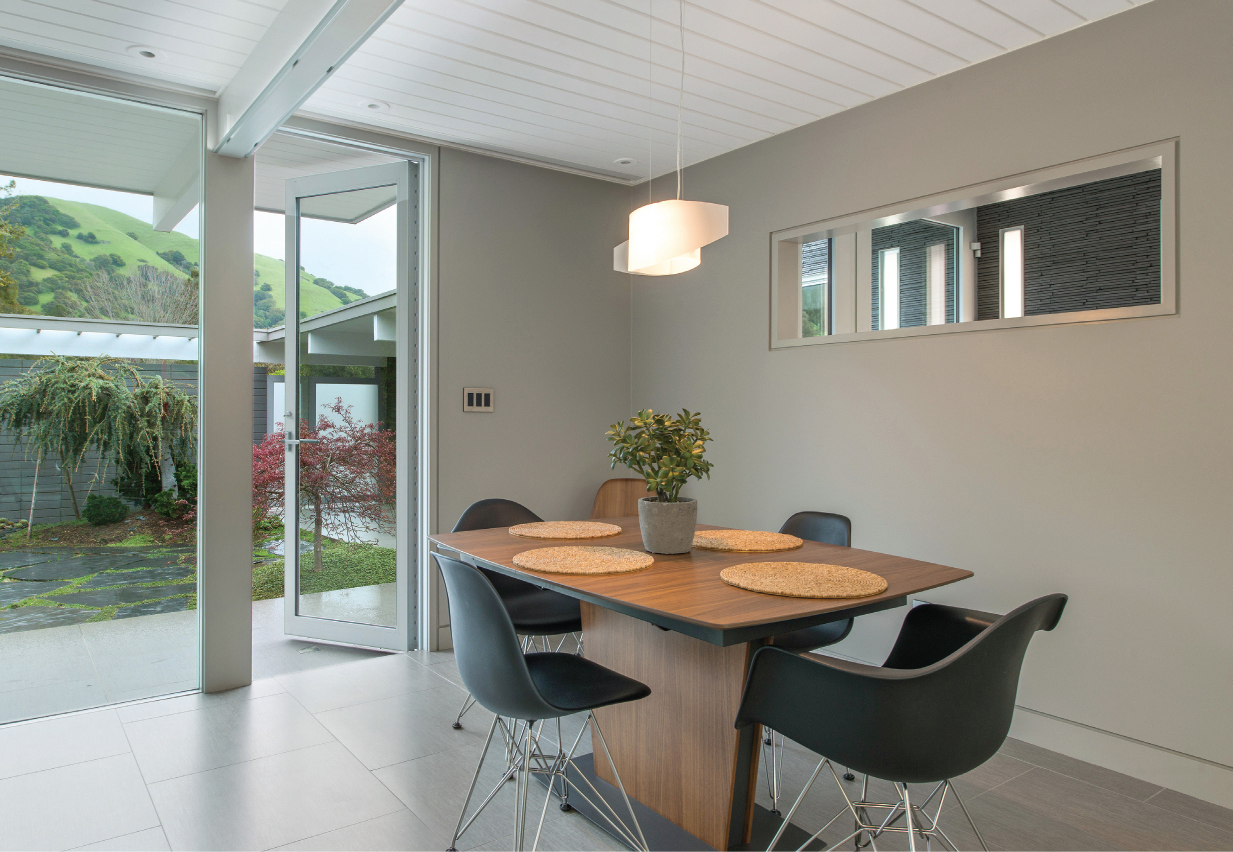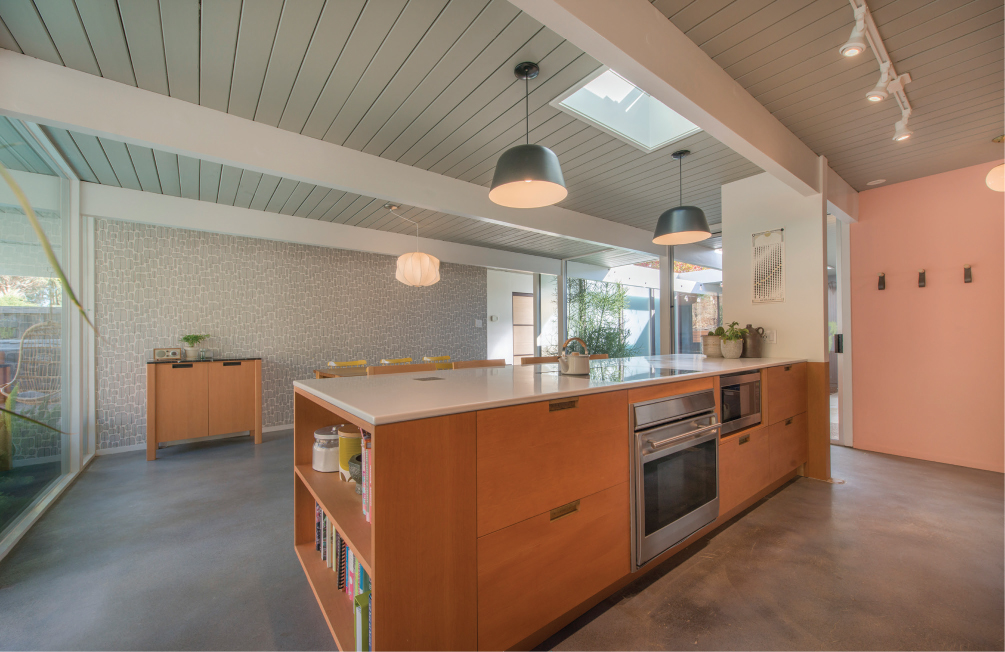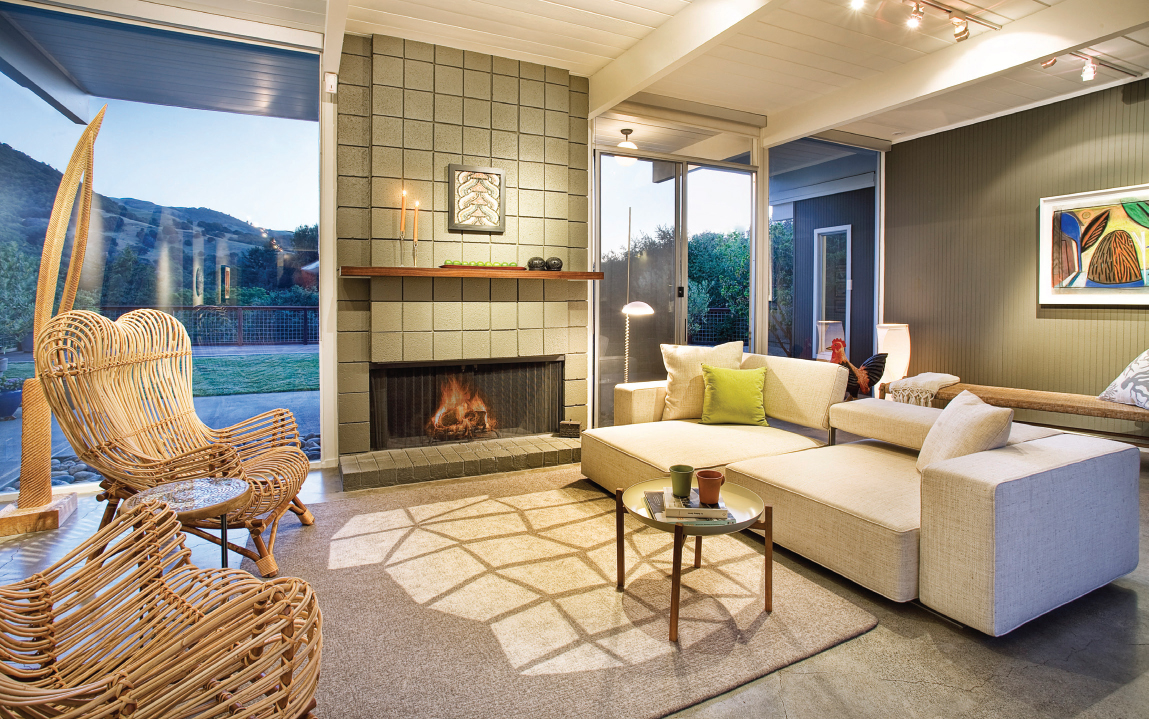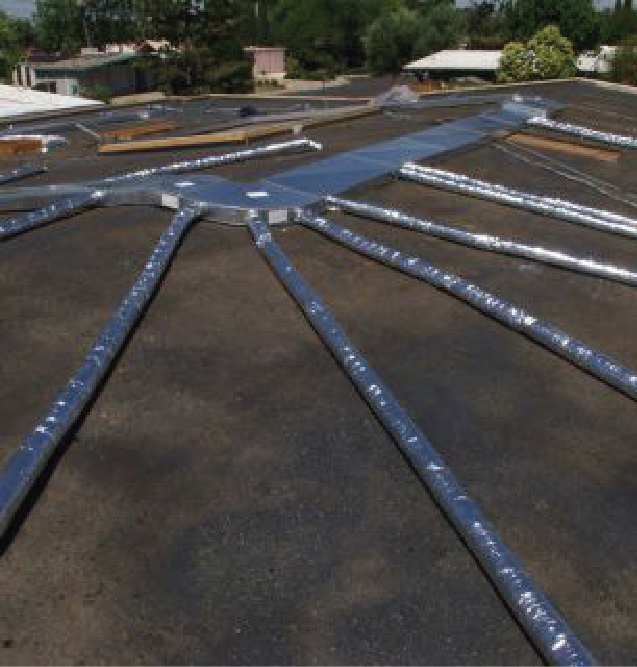Eichler House
The Unico System for Eichler Homes: Visionary Indoor Comfort System Complements & Preserves Visionary Design
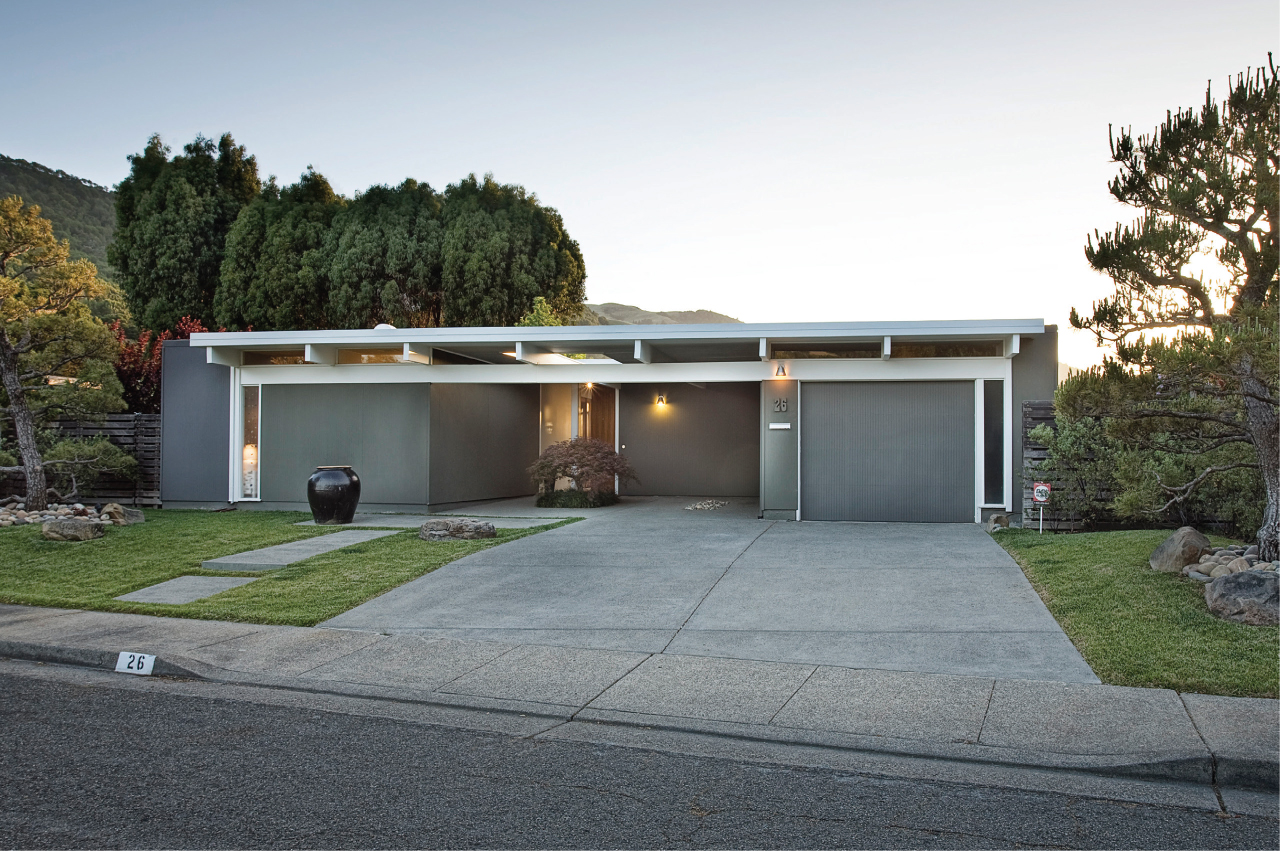
The Vision
California Modernists and Eichler aficionados are well-acquainted with Joe Eichler’s Usonian-inspired vision of “bringing the outside in” through open room designs, floor to ceiling windows, glass transoms, atria, and walk-out patios. After all, these features are part of the intrinsic appeal of Eichler Homes and other post-WWII modernist residential designs. But, with the many forward-thinking design innovations and creature comforts offered in these types of homes, what seemed appropriate and advanced in decades past - like everything – changes with time.
The Issue
With the majority of Eichlers having been built in the ‘50s and ‘60s, many of the indoor comfort innovations introduced with these homes, such as in-floor radiant heating systems and single-story, open layouts conducive to natural cooling and ventilation, have either succumbed to old-age or no longer meet contemporary comfort expectations or current energy efficiency standards.
According to a November 2017 article in The Sacramento Bee, “by the end of the century…annual summer temperature averages in the Sacramento region are projected to increase between nearly 4° and 7° F.1 ” In recent years, the state has suffered prolonged heatwaves that have shattered historical records. Central air conditioning systems, considered a rarely-needed luxury in the temperate California climes of the past, is now a requirement for most homeowners.
The abundance of glass, connected open-areas, and flat, unbroken roofs covered with dark membranes so prevalent in mid-century modern homes, while assets to their charm and aesthetics, wreak havoc on the energy efficiency of conventional indoor comfort systems.
When a new HVAC system is retrofitted into an older home, the installer first performs heat gain and heat loss calculations to determine the home’s required heating and cooling loads and the appropriate system size and layout needed. The heating load is the amount of heat energy that needs to be added to the home, while the cooling load is the amount of heat energy that needs to be removed from the home to maintain comfortable temperatures. Solar energy that infiltrates through windows, walls and roofs impacts these calculations and must be compensated for by the indoor comfort system. This can lead to HVAC system over-sizing and/or the system working longer and harder to keep temperatures comfortable, increasing energy usage and diminishing system efficiency.
Space is also a factor in adding HVAC systems to mid-century modern homes. Like Eichlers, most of these homes are constructed on concrete slabs, with no basements or crawlspaces in which to house HVAC equipment and ductwork. The open layouts, post-andbeam construction, and tongue and groove ceiling decking also present challenges and often require the addition of soffits or dropped ceilings to conceal ductwork. To owners and preservationists, these compromises are the architectural equivalent of painting a moustache on the Mona Lisa.
For owners and enthusiasts of these homes, the question is: How to update them for 21st-century needs while maintaining their original charm and appeal?
The Solution
The Unico System is a small-duct central heating and cooling system which uses a main duct, or plenum, that is 1/3 the size of traditional HVAC systems. The supply ducting that branches off the plenum to deliver conditioned air to various rooms, consists of flexible, insulated tubing with a 3.5-inch outer diameter. These supply tubes snake through small cavities within homes and terminate in unobtrusive round or slotted outlets that can be stained, painted or wallpapered to match any décor. The Unico System allows not only for the introduction of an indoor comfort system that is unobtrusive and aesthetically pleasing, but also provides comfort and energy efficiency far superior to that of its conventional counterparts. The unique, sound dampening design of the supply tubing ensures whisper-quiet operation. Because Unico air distribution works on the principal of aspiration, conditioned air is gently mixed with a room’s natural airflow, eliminating the hot and cold spots and drafts associated with traditional “dump-and-throw” HVAC systems. Because The Unico System removes 30% more moisture than conventional systems, occupants can feel cool and comfortable at higher thermostat settings, increasing the system’s operating efficiency. The Unico System has been installed in over 600,000 homes within the U.S., including many Eichlers and California Moderns, and enjoys the distinction of being the only HVAC system endorsed by the National Trust for Historic Preservation. Because of its ability to provide superior indoor comfort while maintaining the integrity of historic structures, the National Trust has installed The Unico System in President Lincoln’s Cottage and the Petersen Home (where Lincoln died) in Washington DC.
Advantages Over High-Wall Split Units
Some HVAC professionals have proposed the installation of wall-mounted, single-room units – also known as high-wall splits – as an indoor comfort solution for Eichler and California Modern homes. However, this “solution” presents a host of problems in comparison to The Unico System.
High-wall splits are, essentially, suped-up window A/C units – without the need of a window. These ugly white, beige, or black units are typically one-foot tall by threefeet wide and need to be placed on a room’s exterior wall. Ceiling mounted units are also possible, but the ceiling often needs to be dropped to accommodate this feat.
By their very design, high-wall splits are not a central heating and cooling solution but, rather, address indoor comfort needs in an inefficient, room-by-room approach. They disrupt and mar the home’s aesthetics with their bulky, obtrusive placement (often above sofas, chairs, and beds) and are woefully lacking in their ability to comfortably heat or cool a home. High-wall units dump 80% of their conditioned air into only one-third of a room’s existing air volume, creating uncomfortable drafts and temperature variations as high as 8° F.
High-wall units provide no humidity control or ability to provide fresh outdoor air and, additionally, at almost twice the decibel levels, are far noisier than The Unico System. Since they are not a whole-house solution, each unit must work separately to control the temperatures in each room, meaning higher monthly energy costs.
When compared to The Unico System, high-wall splits are no solution at all.
1 http://www.sacbee.com/news/politics-government/ capitol-alert/article184244098.html#storylink=cpyPhoto Credits
All photos ©2018 EichlerForSale.com
and used with permission.
Location
California
